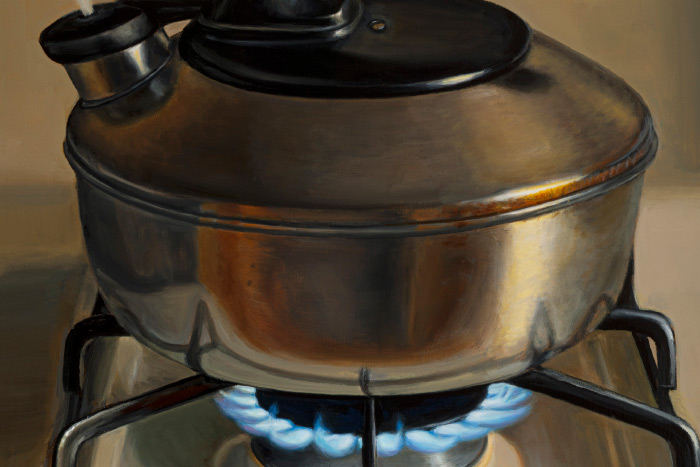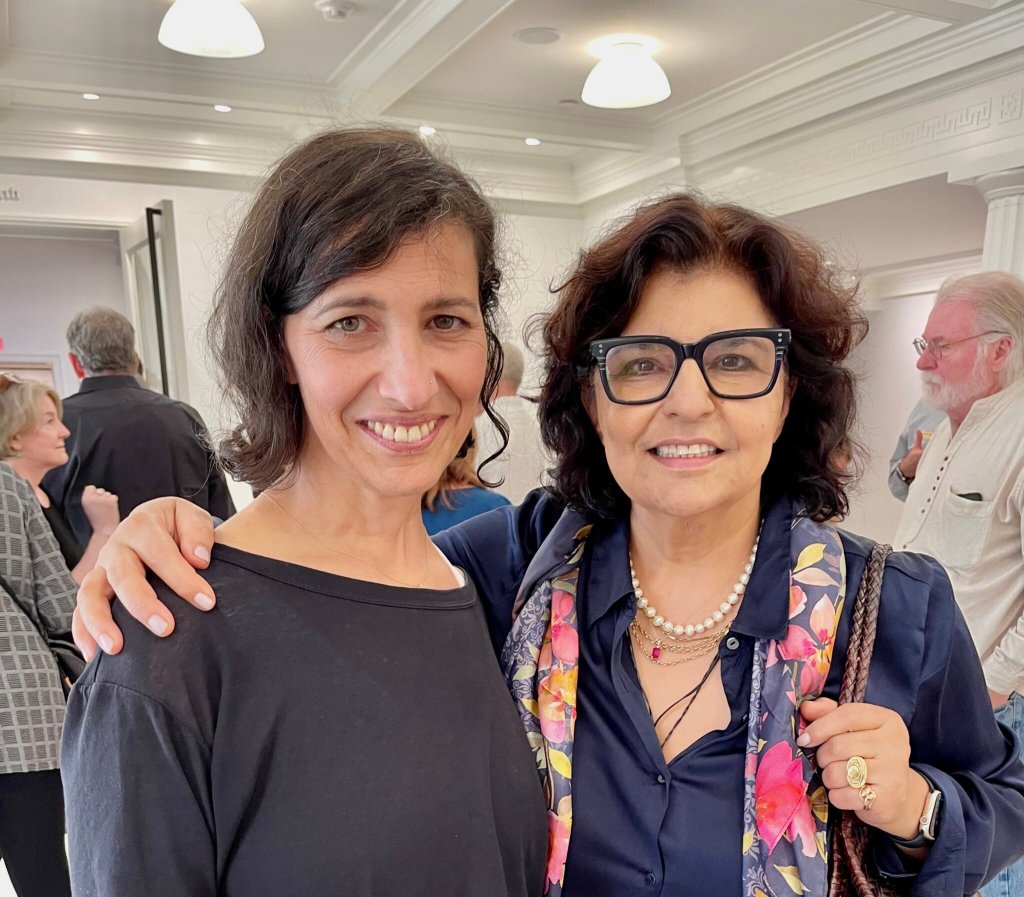Meet Dan's Papers Cover Artist Robert Mehling

This weeks cover artist, Robert Mehling, began drawing when he was 10, copying book illustrations. It wasn’t until the early 2000s that he began to seriously study art. Now Mehling doesn’t just do, he also teaches. Every Wednesday he teaches oil and watercolor painters of all skill levels at the Southampton Cultural Center. As he says on his website, “For an artist there is no greater earthly reward than simply being able to paint.” Amen!

Can you start by talking about your inspiration for this particular piece?
Painting still life is about elevating and celebrating the overlooked object. This painting celebrates an object from my childhood: the stovetop kettle my mom used to boil water in for tea when I was a kid. It had a loud, distinct whistle. I inherited objects like the kettle after my parents passed away. They help to remind me of them. Of course the title, “Mother’s Whistler” is a pun on the title [“Whistler’s Mother”] of Whistler’s famous painting,
You paint with oils, watercolors, pastels and in other media. Do you prefer one to the other?
I prefer traditional media: no plastic paint (acrylics) for me! I have been drawing since I was 10 years old but only learned how to paint academically in 2000. Realist paintings like mine are drawing-based. All of my still life paintings are painted on top of drawn cartoons. I enjoy painting in other media, but for me, oils are king.
Do certain subjects or objects demand a certain media?
Give me any media and I’ll make it work. I have made the same painting in both watercolor and oil to show the similarities and differences between the media. People tell me my watercolors look like oil paintings. I strive to recreate reality using trompe l’eoil (trick of the eye) painting techniques, trying to convince viewers that they are seeing real objects rather than paint.
Light is very important in your work. Could you talk briefly about that?
Without light we wouldn’t be able to see. All the colors of the rainbow hide in light. Light describes objects. To create illusionistic paintings an artist must carefully and faithfully record the light he or she observes and render it on canvas using the tools of chiaroscuro.
Is there an artist whose use of light you admire, who you think our readers should absolutely know?
The artist who first emphasized light over line was Caravaggio. His tenebrism (exaggerated, theatrical chiaroscuro) was highly emulated during the Baroque and after. I’m also fond of Chardin’s thinly painted, scrubbed-in still life style. I’m inspired by 19th century artists in general. Perhaps William Michael Harnett, the American tromp l’oeil master, inspires me most.
Is there one piece of advice you’ve received from another artist that has stuck with you over time?
One of my instructors at the Long Island Academy of Art, Bennett Vadnais, gave me two related pieces of advice that stuck with me: “Detail is the enemy of form” and “Keep your shadows flat, flat as a mat…flatter than that!” If one observes too much detail in shadows, it flattens form, and form is the important thing in describing objects, not detail.
Where can we go to see your work for ourselves?
I show regularly with the Southampton Artists Association at the Southampton Cultural Center.
For more information on the artist visit robertmehling.com. For more information of his painting classes visit ssc-arts.org.




